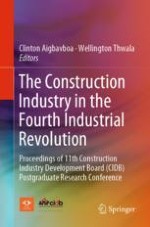2020 | OriginalPaper | Chapter
Making Rental Housing in the Gap-Market More Affordable Through Green Building Technology
Authors : Prisca Simbanegavi, Ziev Shani, Justin Watkins, Kimera Ramruthan
Published in: The Construction Industry in the Fourth Industrial Revolution
Publisher: Springer International Publishing
Activate our intelligent search to find suitable subject content or patents.
Select sections of text to find matching patents with Artificial Intelligence. powered by
Select sections of text to find additional relevant content using AI-assisted search. powered by
